Enlightened Vision: Photograph Collection Informs, Educates and Celebrates
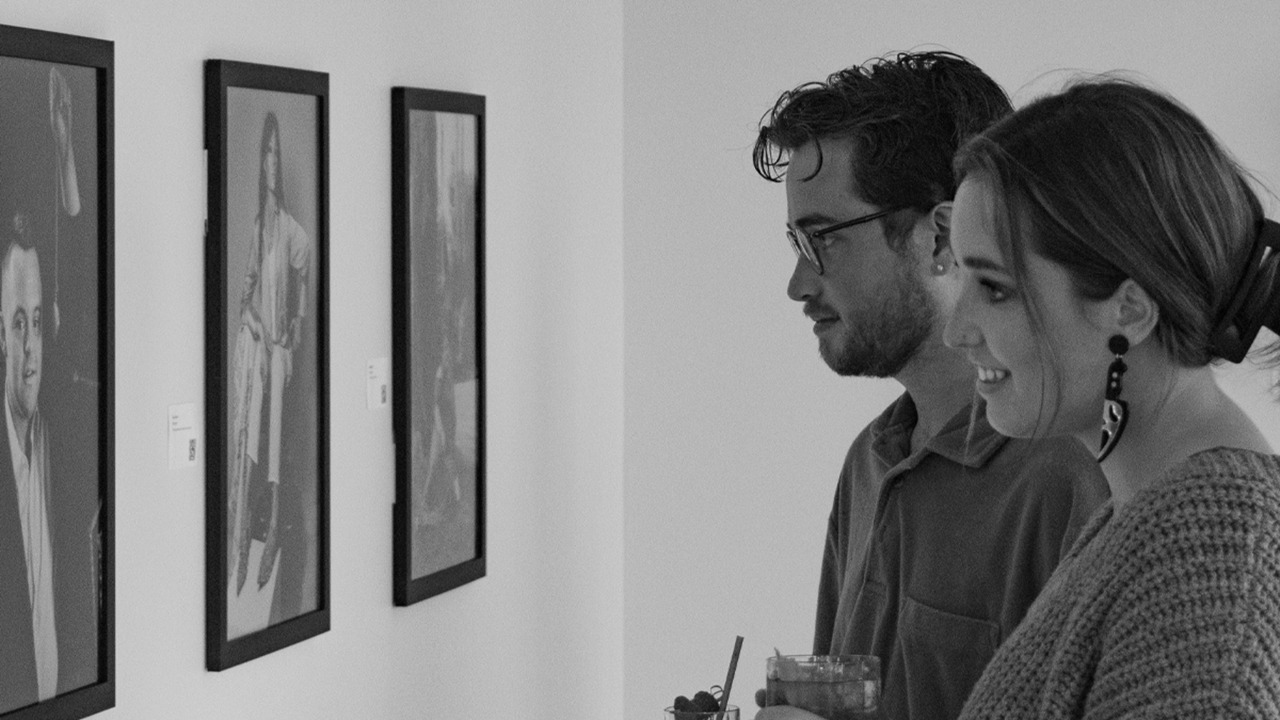
Kendra Gottsleben is the founder of Rare by Design, and she and the organization had specific objectives for the photos and exhibit. “Our mission with this project, and with other projects we pursue,” she noted, “is to bridge the gap between initial perceptions and the rich human experiences that lie beneath visible disabilities.” Gottsleben, who serves as the marketing communications specialist at the University of South Dakota's Center for Disabilities, explained that people with visible disabilities often face immediate assumptions and judgements due to their conditions. “This is a reality they cannot conceal,” she said
It was the marriage between Rare by Design with Sioux Falls-based visual arts organization Untitled.10 that firmed up the exhibit plan. Untitled.10 promotes emerging artists with an emphasis on art that is equitable, inclusive and open-minded.
The result of this collaboration is an inspiring and stimulating collection of photographic images. Each model portrayed has their own unique and compelling story, but all models are bound by common traits: Fortitude, perseverance, creativity, positivity. The power and trajectory of this exhibit only begins with photography. There is so much more to be learned by the viewer. For example, what path led each model to a photo session? These stories are captured in a book created by Untitled.10 and written by Max Hofer that shares the same name as the title of the exhibit
The over-arching theme of this collection of images is not vague or abstract. All of us can inspire the rest of us, and in many ways, for many reasons. Meaningful art proposes that we pay close attention to the world around us, to those around us. Lasting art suggests that we be perceptive and sensitive to those messages delivered by voices spoken and unspoken.
Meet the 14 models featured in the exhibit.
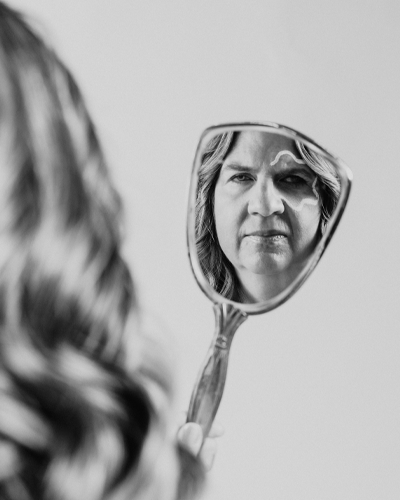
Koni Sims
A rare eye disease, aniridia, rendered Sims legally blind since birth. And in 2017, an auto-pedestrian collision crushed her feet and seriously injured her back, causing permanent mobility issues. That condition forced retirement from her job. Sims then became a state and national advocate for others with disabilities, especially those who have vision loss. “I think all of us have a disability to some degree,” said Sims. “It’s just more noticeable on some of us.”
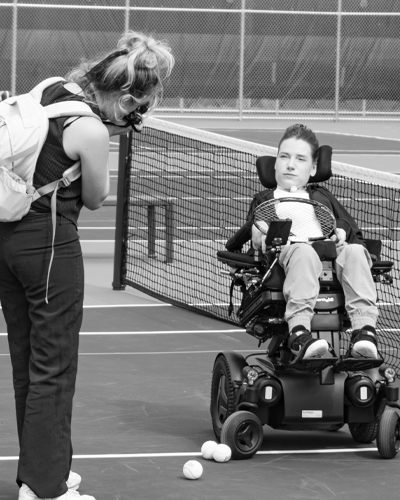
Kayley Shade
Born with spinal muscular atrophy, Shade has been a wheelchair user all her life. She’s also been a football fan since she was young, and she has turned that passion into a career. Shade expanded an internship for the Sioux Falls Storm into work as the media director for the Indoor Football League. New treatments have decreased her symptoms and raised her ambitions. “It took me awhile to gain confidence,” she explained, “but I’m more confident now.”
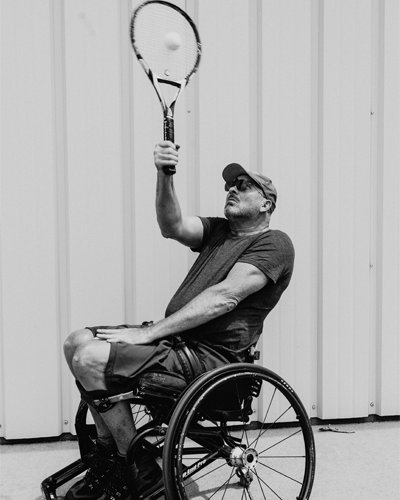
Alma Stewart
Stewart was paralyzed from the chest down as the result of a motorcycle accident. An ardent hunter, angler and outdoor sports enthusiast, Stewart also works as a volunteer coach to those interested in adaptive sports. He is married to Vicki Stewart.
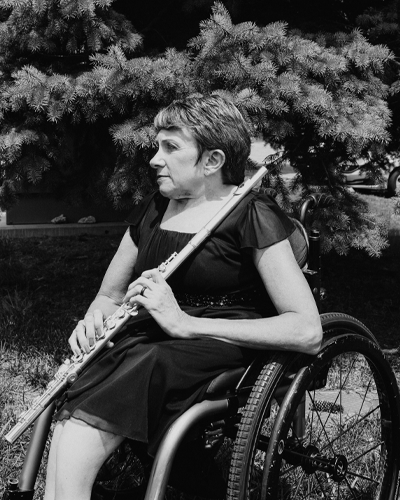
Vicki Stewart
Stewart has osteogenesis imperfecta, also known as ‘brittle bones disease’. A graduate of Augustana University, Stewart serves as executive director of Employment Disability Resources in Sioux Falls. Her interests include national and international travel and music. Her husband, Alma, is also featured in the exhibit. “Unfortunately,” said Stewart, describing common reactions to those with disabilities, “people look at what we can’t do instead of what we can do.”
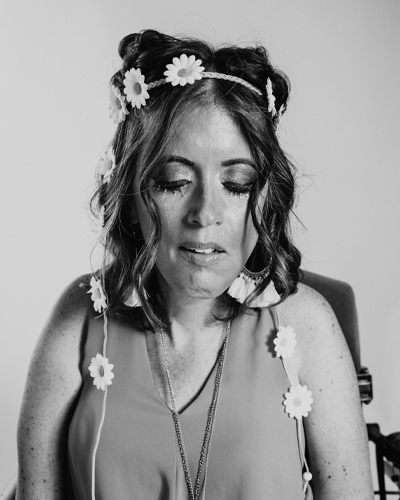
Melinda Pallone
Pallone was born with merosin deficient congenital muscular dystrophy, and used leg braces to walk until puberty, when she became a wheelchair user. Pallone pursued higher education and earned bachelor’s and master’s degrees. She works as an independent living specialist/advocate at a Center for Independent Living in Sioux City, Iowa. She and her husband have three children.
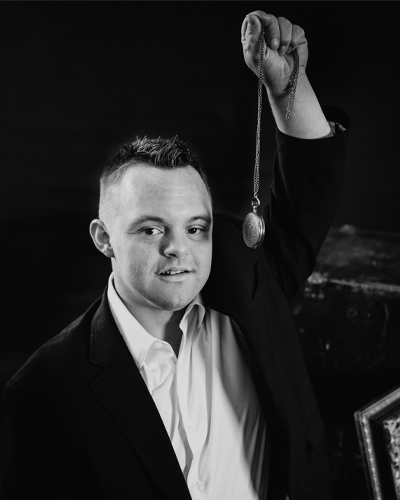
Scotty Briggs
Special Olympian Scotty Briggs competes as a swimmer and in track and field. Born with Down syndrome, Briggs works at The Effortless Bow, in Sioux Falls. He has developed a deserved reputation as a successful fundraiser for the South Dakota Special Olympics.
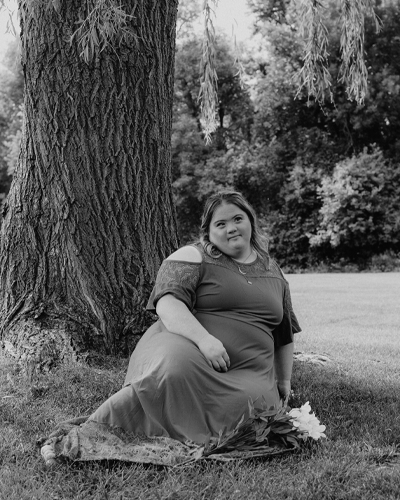
Hailey Bork
Bork acknowledges a common misconception is that adults who have Down syndrome cannot find or perform employment. Bork now works at the Yakkity Yak Coffee Shack in Sioux Falls, where she prepares food and creates smoothies. Her active life includes shopping, fashion, journaling, movies, traveling, visiting parks and lakes and patronizing local restaurants. Bork’s dreams include marrying her boyfriend, a Hawaiian honeymoon, having children, and owning a home and a red convertible.
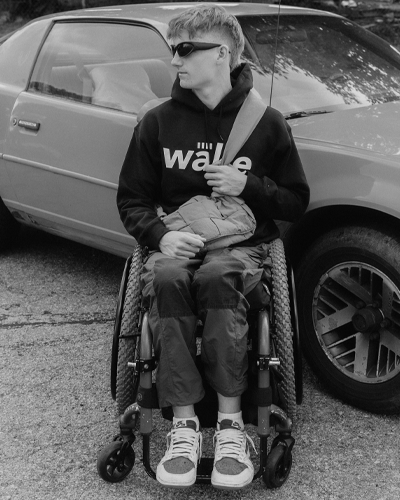
Connor Roeman
The youngest model in the exhibit, Roeman was paralyzed from the waist down two years ago as the result of being a passenger in a car accident. Before the crash, Roeman participated in a variety of sports and was known as a daredevil. He decided he wouldn’t allow the mishap to change him, and he has become a competitor in adaptive sports, including wheelchair tennis, sled hockey and mono-skiing. “I’m the same person I was before my injury,” he explained, “but now, I just have to work harder to accomplish most things in life. Because of this, I have a much clearer mindset.” Roeman’s future plans include attending Augustana University and majoring in business administration and entrepreneurship. He’ll use that education to advance his brand, Endure Anything.
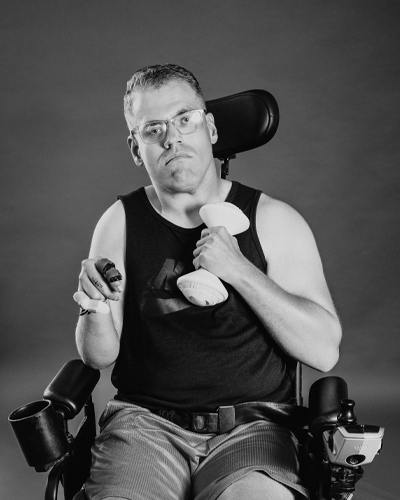
Jeremy Neuheisel
Cerebral palsy and optic nerve atrophy don’t stop Neuheisel from rigorous exercise routines. Between swimming, lifting weights and physical therapy, Neuheisel fits in time to work as a greeter at HyVee and an educator volunteering at the Butterfly House.
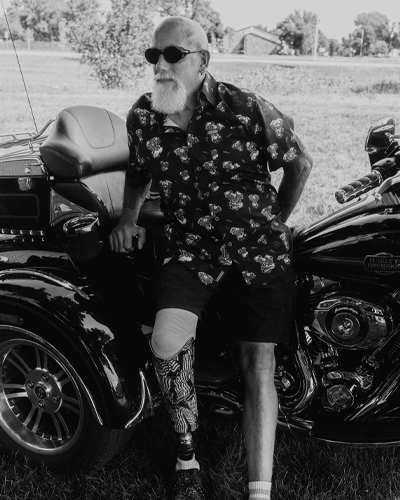
Stephen Bruggeman
At age 20, serving in the U.S. Coast Guard, Bruggeman was seriously injured by an M-16 bullet carelessly discharged by a military comrade during weapons practice. The leg was later amputated. Thanks to encouragement and training by U.S. Veterans Affairs in Sioux Falls, he now pursues adaptive sports, such as downhill skiing, golf, recumbent bicycling and sled hockey.
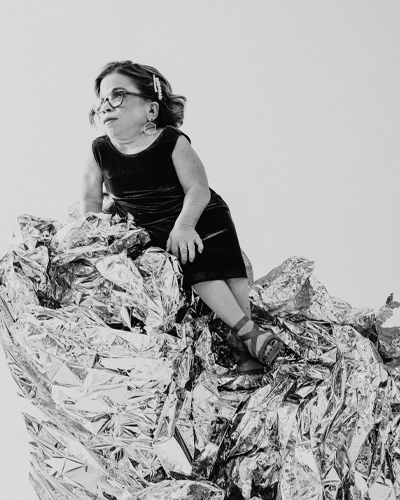
Kendra Gottsleben
Gottsleben was born with a rare disease called mucopolysaccharidosis type VI. Only about 100 people in this country have this disease. Gottsleben has also experienced open heart surgery. She is the founder of Rare by Design, has authored three books and works for the Center for Disabilities within the University of South Dakota’s Sanford School of Medicine.
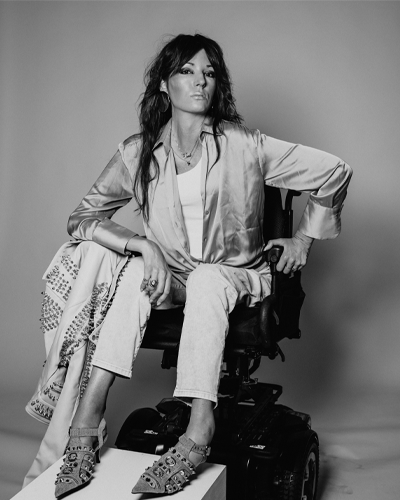
Tana Zwart
Zwart was diagnosed with facioscapulohumeral muscular dystrophy at a young age. A college graduate, Zwart has opened her own graphic design business and volunteers in various leadership roles in Sioux Falls.
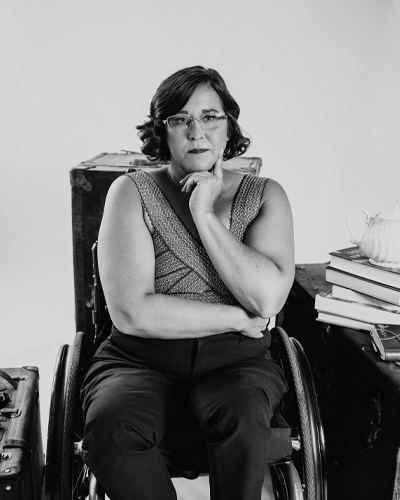
Laura Hayne
At age 18, Hayne broke her back in a gymnastics accident. Recovery was difficult, but Hayne is now a single mother with two children. She is also a member of a local book club and is considering writing a book about her life.
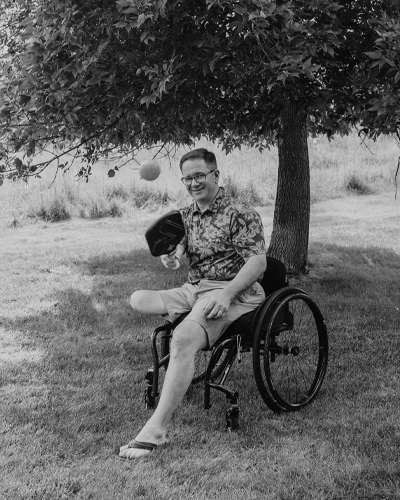
Cameron Hoverson
A malignant tumor wrapped around Hoverson’s spinal cord required major surgery when Hoverson was 24 years old, married and had a one-year-old daughter. That procedure removed parts of Hoverson’s spine, as well as muscle, bone and tendons. He later had one leg amputated to reduce chronic pain. Hoverson has now raised two children and enjoys adaptive sports. Fellow exhibit model Alma Stewart taught Hoverson how to snow ski.
About the Artist
A graduate of Sioux Falls Washington High School, Hollie Leggett attended South Dakota State University for two years before transferring to the Minneapolis College of Art and Design, in Minneapolis, Minnesota. There, she studies and explores multi-media approaches to communication.
This is her first solo exhibition, and the scope and theme of the project presented special demands. “I was unsure about stepping into this space,” Leggett explained, “because I do not have a rare disease or disability.” Leggett was aided in her understanding of people with disabilities by a younger brother who has cerebral palsy. Watching him face challenges and learning about those challenges helped Leggett prepare for and capture poignant images.
Leggett also possesses an artist’s sensitivity and sensibility. “We worked hard to become acquainted,” said Leggett, describing interactions with the models preceding the actual photo sessions. “I understand that being in front of a camera reveals our vulnerabilities. I wanted the models to feel comfortable, and we crafted photos that showed the models in situations and experiences they were comfortable in.”
Following much advance preparation, each of the 14 models was photographed during a long, single-day session. While it was a busy, hectic day, it was also an enjoyable experience for everyone involved. “We had fun, a good time, almost like a party,” said Leggett.
The Opening Event
It was a celebratory atmosphere on Oct. 21, 2023, when the exhibit’s models, their families and friends, and the collective of committed individuals involved in making the exhibit a reality gathered at Monick Yards, an event center near downtown Sioux Falls. As many as 200 people attended the event, and they heard expressions of gratitude by representatives from Untitled.10 and Rare by Design. Leggett also spoke. “I worried I wasn’t up to the job,” she admitted. “But the models helped me through the process. They are my heroes.”
“What could be a better way to build a stronger community than a project like this?” said Rare by Design spokesperson Tana Zwart. “Disabilities are a naturally occurring aspect of the human race. That’s how this exhibit presents people with disabilities.”
This story was originally published in “South Dakota Possibilities 2023,” an annual publication by the University of South Dakota Center for Disabilities. Access the full issue at this link.
About the Center for Disabilities
The Center for Disabilities is part of a national network of federally designated centers known as University Centers for Excellence in Development Disabilities, Education, Research and Service (UCEDDS). The mission of the Center for Disabilities is to improve the lives of individuals with disabilities and their families across the state of South Dakota, the region and nationally. The Center for Disabilities carries out its diverse capacity-building efforts through clinical services, interdisciplinary training, continuing education, research, information dissemination and policy/advocacy work. Its work focuses on the strengths and contributions of people with disabilities, and works across multiple sectors including healthcare, education, mental health, and human services.



